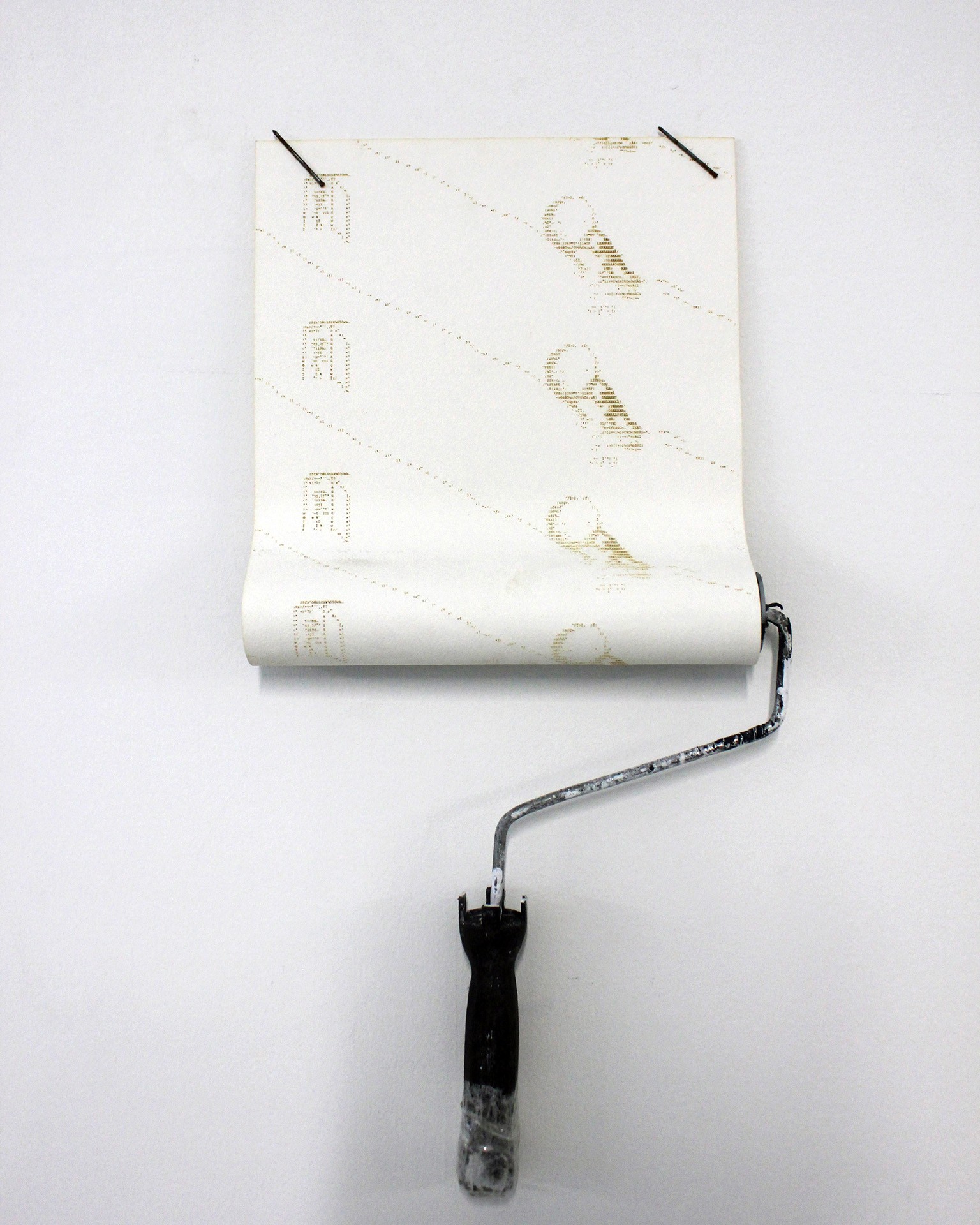Joé Côté-Rancourt
Sisyphe; white cube,
2024
 Paper, painter's roll, 10” x 21”
Paper, painter's roll, 10” x 21”
Projection description
The open studio organized by María Escalona offered me the opportunity to develop two series that address the place of cultural dissemination and its maintenance. One of them addresses the renewal of certain social and economic constructs through gestures of maintenance. This is achieved through the use of found images, ASCII aesthetics, and their installation with construction and maintenance tools. The other will feature small tributes to the care that an artistic venue requires. By mixing the paper pulp created by Escalona with strands of my own hair that I’ve collected over the last ten years, I will shape a collection of little mice that will appear throughout the gallery space. These mice will perform the tasks of janitors, electricians, dishwashers and so on.
About paper_office.doc
Both a temporary studio space and an evolving artwork, paper_office.doc is a collaboration bringing together curatorial, artistic, and technical creation. In it, we embrace the many hats that we, as cultural workers, must wear to maintain a viable practice. We ask ourselves: If we were to materialize the work behind an exhibition, how many sheets of paperwork would we stack? What are the tasks and roles that weigh over us? How can we apply curatorial methodology to artmaking and vice versa? Is the grass growing in our filing cabinets a metaphorical seed for more ethical ways of working or neglected archives and unfiled paperwork perhaps? It might be just a greener addition to our workspace.
Disguised as an office cubicle, our installation attempts to address these questions and proposes a creative use of the materials found in our personal studios, the gallery’s inventory, Concordia’s hallways, or borrowed from other facilities. Above the cubicle/studio, stacks of freshly made paperwork hang above our heads; some are offerings for the public, some are soon-to-be piecework for an installation, some are blank pages waiting to archive future projects, and whatever is left will be turned into pulp once again, as the cycle continues.
Office hours of the paper studio: from Wednesdays to Friday, from 2pm to 6pm, (except July 26th, August 16th, and September 6th) the public is invited to join María Andreína Escalona De Abreu to learn about papermaking and the curatorial process as she produces paper sheets to hang above the cubicle.
This exhibition would not have been possible without the support and expertise of Arrien Weeks, Sustainability Technician at Concordia University Centre for Creative Reuse (CUCCR), and the Céline Bureau Residency. Their loan of office supplies, furniture, and building materials has allowed us to build this paper studio using what is at hand, leaving little material impact and opening up possibilities to activate other projects with its components.
paper_office.doc will be extended to the exhibition space at Céline Bureau as part of the curatorial project by María Andreína Escalona De Abreu and Chloë Lalonde in October 2024.
About the artist
Joé Côté-Rancourt is a multidisciplinary artist. His work revolves around the theme of construction, whether physical or social. His works question how things are built, how they fall, and who benefits from these movements.
He completed a bachelor's degree in Sculpture at Concordia University in 2019. During his degree, his project Tired students was acquired by the Concordia University Faculty of Fine Arts to be permanently displayed in the inner courtyard of the Visual Arts Building. He now works as a technician for the Faculty of Fine Arts, in the wood and foundry workshops,and in the digital fabrication lab. He is also a technician at the FOFA Gallery, where he installs and takes down exhibitions. Additionally, he is a theater actor and will present his first set design in November 2024 in Québec City. In 2024, he traveled to Iceland for his first international artist residency at the NES Artist Residency.
Côté-Rancourt is interested in how and why things are shown. His position within art communities and his involvement in cultural dissemination in Montréal and Québec City fuel his reflections.
